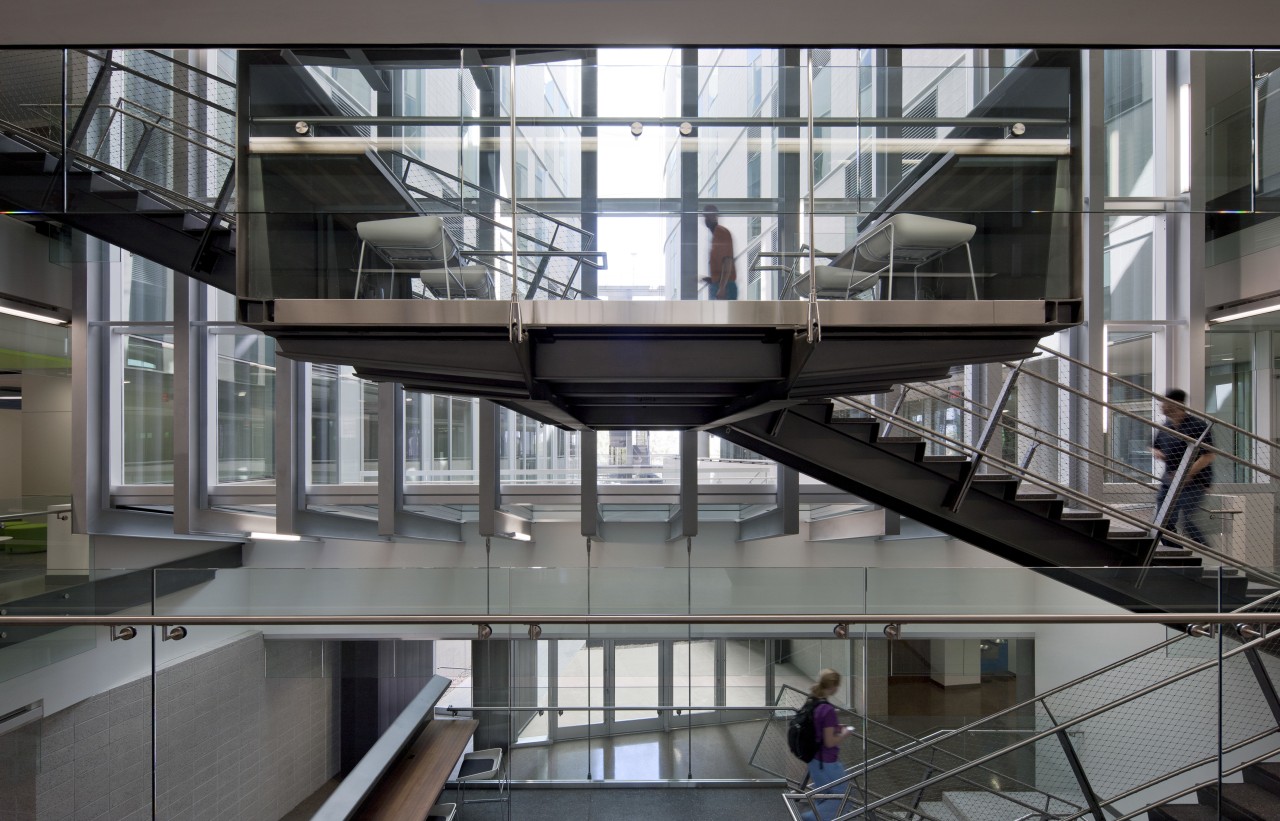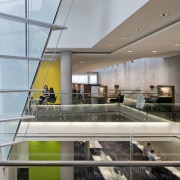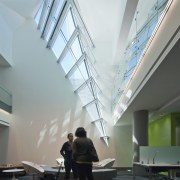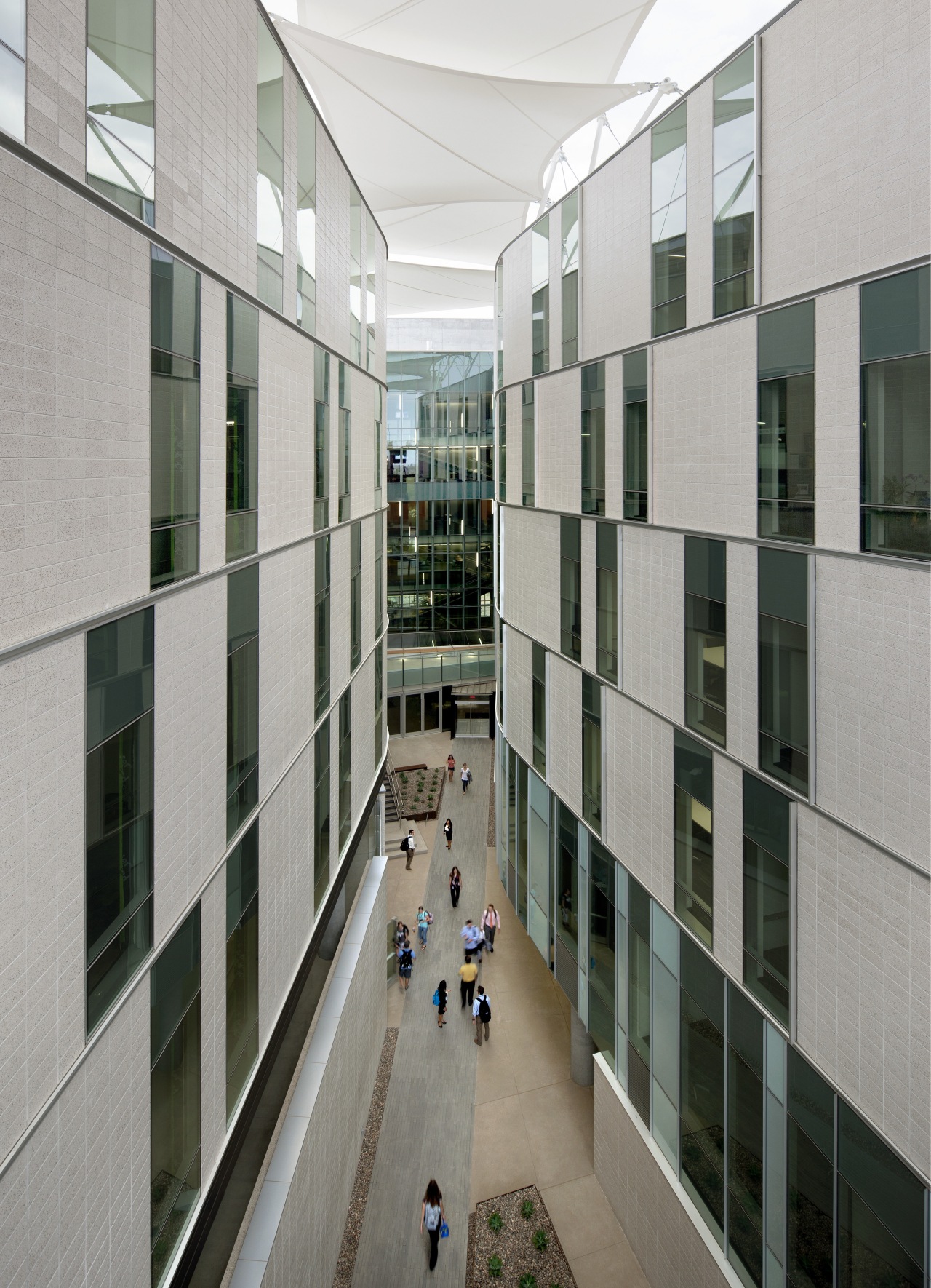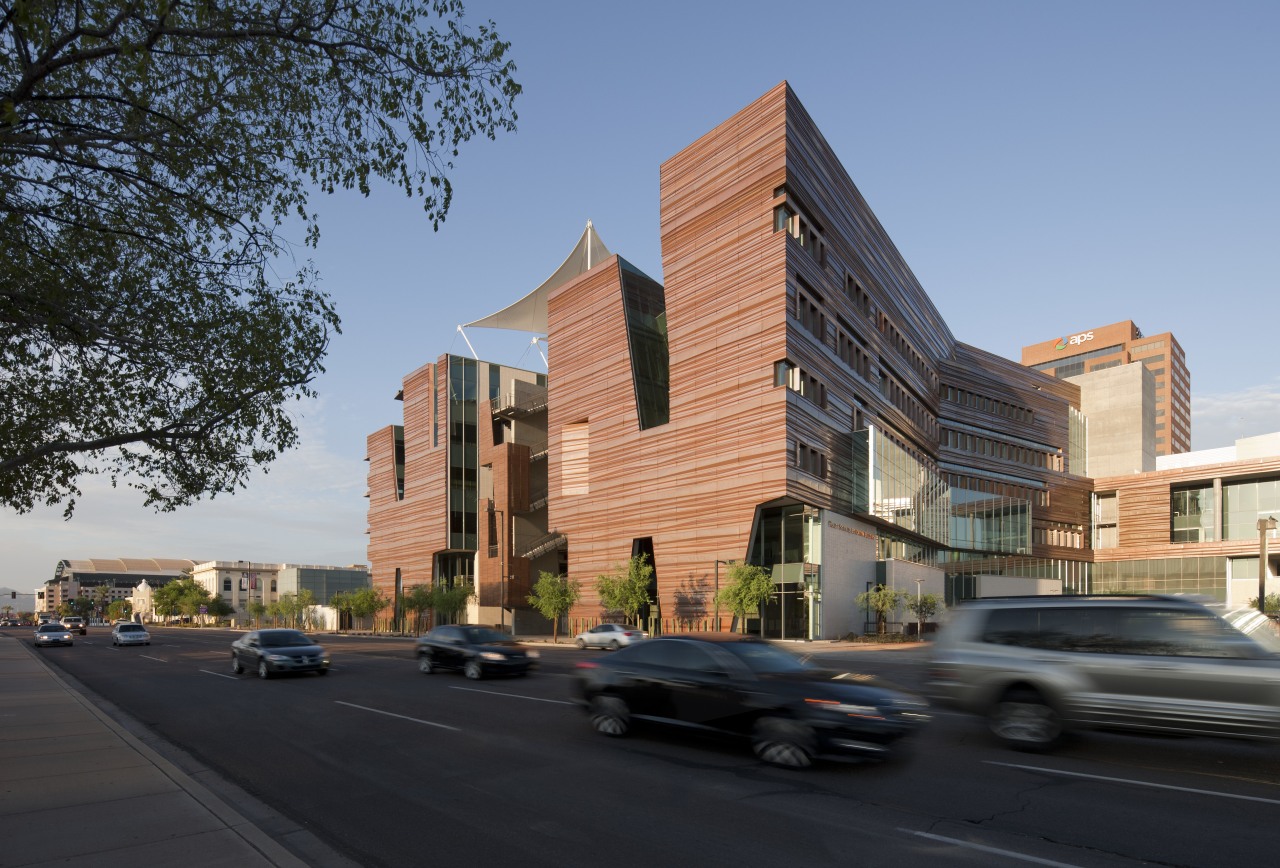Form and orientation of university building designed to minimise intense climate
CO Architects' design of the Health Sciences Education Building in urban Phoenix draws inspiration from surrounding mountains and canyons and responds to the intense desert climate
Look at the buildings in any city around the world and there would be few that truly have a unique sense of place. Most of them could have been built anywhere and probably already have.
But CO Architects' principal, L. Paul Zajfen, is sure that doesn't apply to the Health Sciences Education Building the firm designed for a medical campus in downtown Phoenix.
"The mountains surrounding Phoenix are a reddish colour and very striated," says Zajfen. "I wanted to evoke the heaviness and solidity of those mountains and make it feel like it was only possible to build this in Phoenix."
The colour and patina of the mountains were abstracted by folding the building's copper skin, creating a visual connection to its surroundings.
advertisement
But it's the form of the building in response to the intense effects of the Arizona desert climate that makes it so site specific, says Zajfen.
"The form evolved from modelling how the sun moves around the building, and how it could be given as much shading as possible."
This was achieved by dividing the facility into two east-west wings and then determining the optimum position and sizes of glazed areas and shading devices to reduce the air conditioning load.
The windowless east and west facades are both carved open to create deep crevices with shaded north and south glazing, bringing light right into the centre of each of the wings. Plus the exterior space between the two wings is tall and intentionally narrow and is referred to as the canyon.
"Despite being very narrow, it's not oppressive in this climate. It's physically cool, clad in masonry to absorb heat and shaded by large sails above."
Exhaust air from the building's heating and cooling systems is also pumped into the canyon. Because the exhaust air temperature is lower than that of the ambient outside air, it helps to cool this outdoor space.
Facilities at the Health and Science Education Building include three large lecture halls accommodating 130-140 students each, simulation operating theatres with computerised mannequins, standardised patient examination rooms, and briefing and debriefing rooms for feedback sessions.
The complex provides learning environments to train 1200 medical professionals and will also serve as a learning and teaching resource for the research community.
Credit list
Project
Associate architect
Civil engineer
Climate engineer
Lighting designer
Cladding
Facade construction
Paints
Executive and design architect
Structural engineer
Mechanical and electrical engineer
Fire consultant
Construction company
Roof
Glazing
Awards
Story by: Paul Taylor
Photography by: Bill Timmerman
Home kitchen bathroom commercial design
advertisement
advertisement
advertisement
advertisement
advertisement
advertisement
advertisement
